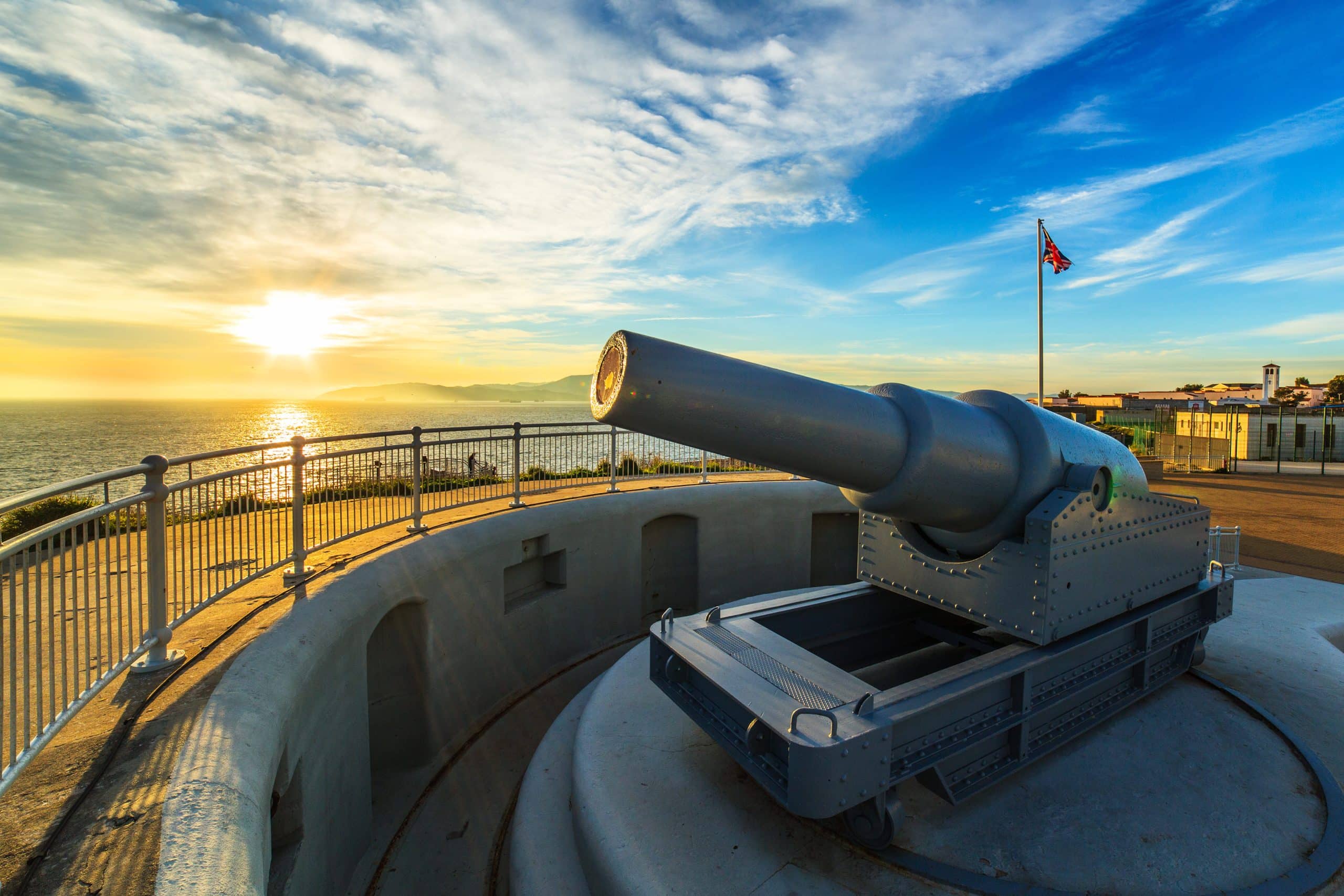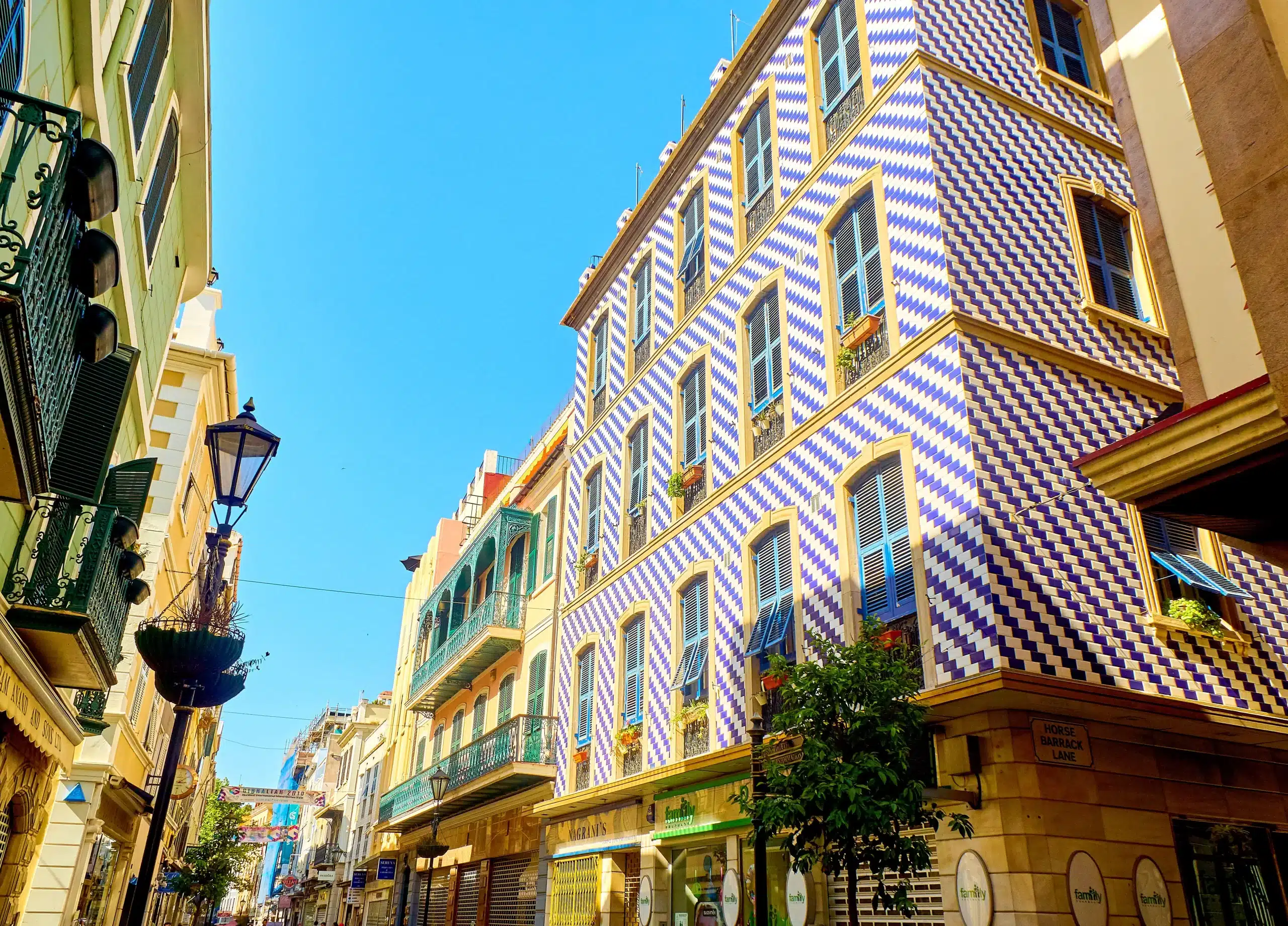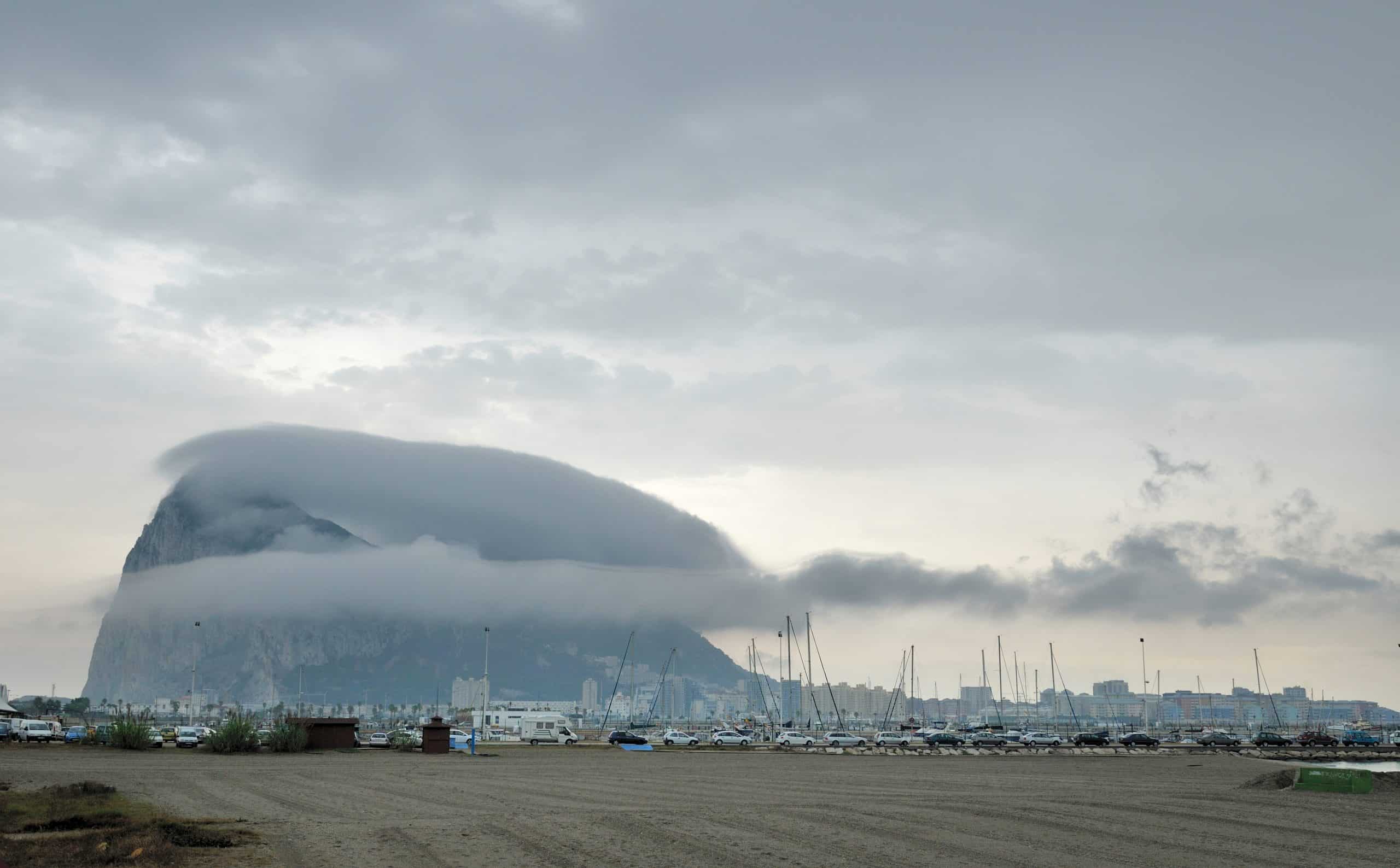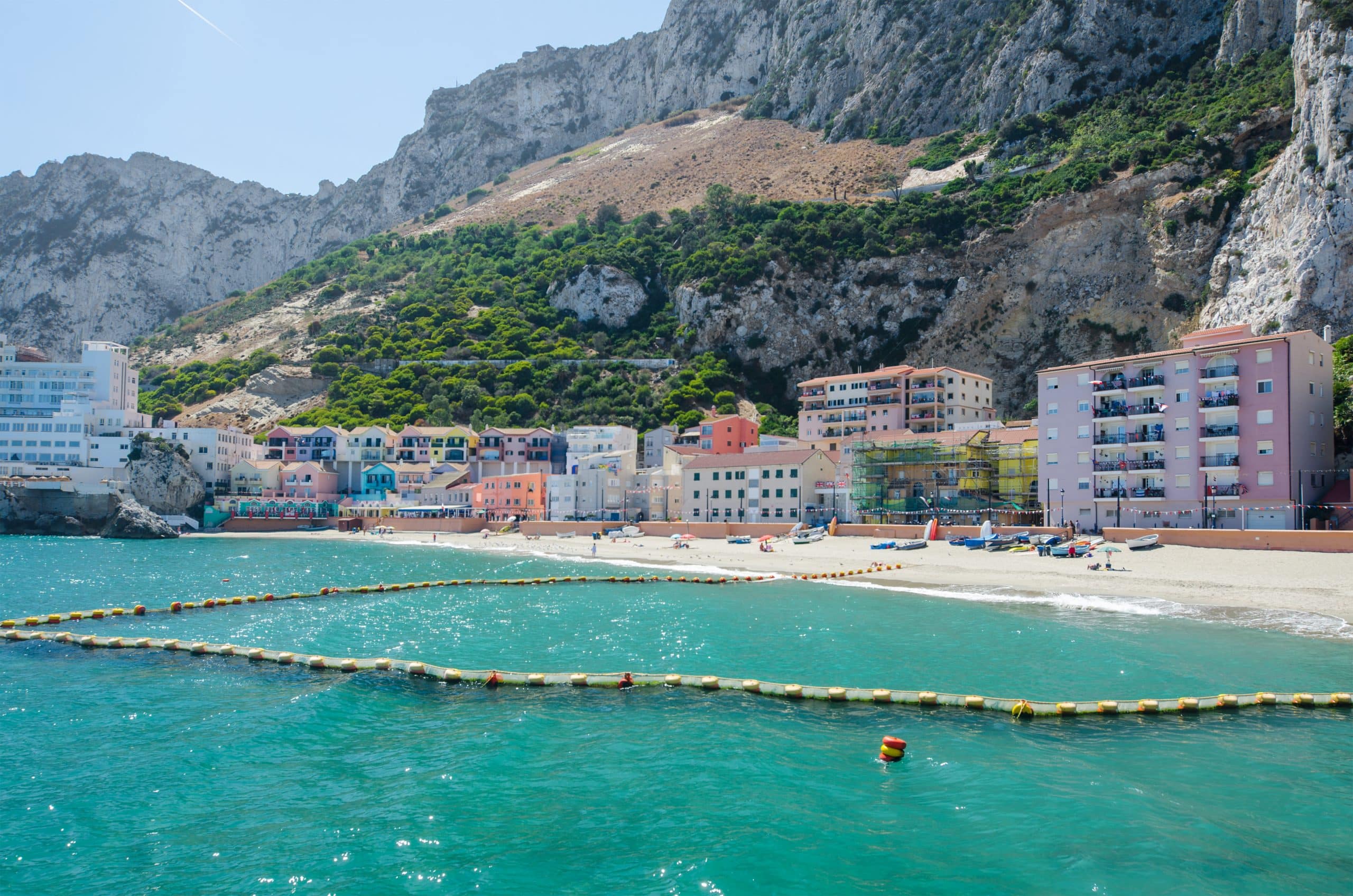
The 100-ton Gibraltar Cannon: A Testament to Victorian Military Engineering
In this Article
1. Introduction
2. Historical Background
3. Operational History
4. Conclusion
Introduction
Sited on the rugged southwestern cliffs of Gibraltar, the awe-inspiring Napier of Magdala Battery stands as a formidable monument to the ingenuity and ambition of Victorian military engineering. Overlooking the sweeping vistas of the Bay of Gibraltar and the tranquil Rosia Bay, this historic site houses one of the two surviving 100-ton guns designed by the renowned arms manufacturer, Sir William Armstrong. These colossal cannons are not merely relics of the past; they embody a significant chapter in the evolution of military technology and underscore the strategic importance of Gibraltar during a pivotal era.
The installation of this enormous artillery piece was driven by the escalating arms race of the late 19th century, a time when advancements in weaponry and fortifications were crucial to maintaining global dominance. The 100-ton gun, with its impressive range and destructive power, was a marvel of its time, symbolizing the pinnacle of contemporary engineering and military foresight. The gun’s imposing presence and the meticulous craftsmanship required for its construction reflect the technical prowess and industrial capability of Victorian Britain, which sought to fortify its overseas territories against potential threats.
Gibraltar, with its commanding position at the entrance to the Mediterranean, has long been a focal point of military strategy and geopolitical significance. The deployment of the 100-ton gun at Napier of Magdala Battery exemplifies the strategic calculations of British military planners who recognized the necessity of securing this vital maritime chokepoint. The gun’s ability to target enemy ships attempting to navigate through the narrow strait underscored Gibraltar’s role as a guardian of naval routes and a linchpin of imperial defense.
Today, the 100-ton gun stands not only as a testament to a bygone era of military grandeur but also as a symbol of the enduring legacy of Victorian engineering. Visitors to Napier of Magdala Battery are transported back to a time when the world was rapidly changing, and technological innovation was at the heart of national security. This monumental piece of artillery, with its storied history and imposing stature, continues to captivate the imagination, reminding us of the remarkable achievements and strategic imperatives that shaped the modern world.
Historical Background
The Genesis of the 100-ton Gun
The Armstrong 100-ton gun, a 17.72-inch (450 mm) rifled muzzle-loading (RML) cannon, was manufactured by the Elswick Ordnance Company, the armaments division of Armstrong Whitworth. The company, led by William Armstrong, designed these guns in response to the rapid advancements in naval artillery during the late 19th century. Initially, the largest gun produced by British firms around 1870 was a 320 mm RML gun. However, with French industries soon creating a 420 mm gun, the Royal Navy sought even larger weaponry.
Armstrong’s ambitious project led to the creation of the 100-ton gun, a weapon that was ultimately too heavy and costly for the Royal Navy. However, the Italian navy saw potential in these enormous guns and installed them on their battleships. In response, the British fortified key locations, including Gibraltar and Malta, with these formidable weapons.
Installation in Gibraltar
In December 1878, the British Government authorized the construction of two batteries in Gibraltar: Victoria Battery and Napier of Magdala Battery. These batteries were part of a broader strategy to counter the Italian battleships armed with similar Armstrong guns. By 1883, the Napier of Magdala Battery was equipped with a single 100-ton gun, named after Field Marshal Robert Napier, 1st Baron Napier of Magdala, who had served as Governor of Gibraltar.
The gun at Napier of Magdala Battery, nicknamed “The Rockbuster,” originally armed Victoria Battery. However, after the original gun at Napier split during firing practice, the Victoria gun was relocated to Napier. The installation of these guns cost the British government £35,707, a considerable sum at the time.
Design and Construction
The 100-ton gun was an engineering marvel of its time. Measuring 9.953 meters (32.65 feet) in length, the barrel’s maximum outer diameter was 1.996 meters (6 feet 6.6 inches), tapering to 735 mm (28.9 inches) at the muzzle. Constructed with an inner steel tube surrounded by multiple wrought iron coils, the gun’s design was complex and robust. The entire assembly weighed approximately 103,888 kg (229,034 lbs), or about 100 tons.
Firing Mechanism and Capabilities
Firing the gun was a labor-intensive process requiring a crew of 35 men. The gun could be fired once every six minutes, with a muzzle velocity of 472 m/s (1,550 ft/s). At its maximum elevation of 10° 30′, the gun had a range of 5,990 meters (19,650 feet), and its projectiles could pierce 394 mm (15.5 inches) of steel. Despite its impressive firepower, the gun’s rate of fire and range were limited by the technology of the time.
Operational History
World War II and Beyond
During World War II, the British Army stationed a battery of four 3.7-inch and two Bofors quick-firing anti-aircraft guns at the Napier of Magdala Battery site. In 1945, these guns almost fired upon an Iberia Airlines Junkers Ju 88 that had mistakenly entered Gibraltar’s airspace.
The “Rockbuster” was last fired in 2002, using a small signaling charge to commemorate the 2002 Calpe Conference between Gibraltar and Malta. This marked the final salute of a weapon that had once stood at the forefront of coastal defense technology.
Philatelic Tribute
In 2010, Gibraltar and Malta jointly issued a set of four stamps featuring the 100-ton guns. Two stamps depicted the gun at Napier of Magdala Battery, and two depicted the gun at Fort Rinella in Malta. These stamps provided a historical perspective, with one stamp from each pair showing the gun as it appeared in 1882 and the other in 2010.
Conclusion
The 100-ton gun at Napier of Magdala Battery transcends its historical significance to become a must-visit tourist attraction in Gibraltar. It offers visitors not just a glimpse into Victorian engineering excellence, but an adventurous and immersive experience. Marvel at the breathtaking views and engage with the past in a hands-on manner that only Rocky Monkey can provide. Explore this iconic landmark with us at rockymonkey.gi and discover how adventure and history blend seamlessly at the 100-ton gun. Join us for an unforgettable journey into Gibraltar’s storied past and engineering prowess.






